 I hadn't meant to abandon this blog for seven months but that's how long it's been since I posted. In the spring of 2016 we decided to move back home after living most of our adult lives away. Home was just one county south, but it felt like a new country. Preparing our old house to sell, finding a new home, sorting and packing, shedding everything that wouldn't fit in a much smaller place, moving and then traveling back and forth for months until our prior house sold . . . well, it took much longer and way more energy than I imagined. Now a new year has arrived with fresh hope and perspective. It's strange and wonderful to return to the place where I spent my early days. Everywhere I look are reminders of the sights, sounds and smells that shaped my view of the world. We writers of children's books count on childhood memories to help us relate to our characters. Home is a popular subject in middle grade books. Most of them feature characters searching for a place to belong. In Augusta Scattergood's The Way to Stay in Destiny, Theo fights to stay in a boarding house where he's found friends who understand his love of music and baseball. In J.K. Rowling's Harry Potter series, Harry dreads summers with Aunt Petunia and looks forward to the school year when he can return to his beloved Hogwarts Academy. Bod Owens in Neil Gaiman's The Graveyard Book is adopted by ghosts in a cemetary. The places we grow up weave into the fabric of our souls. If we followed Theo, Harry and Bod into adulthood, we'd see the boarding house in Destiny, Hogwarts Academy and the graveyard playing roles in their lives. We'd see those places call them back. That thread from home, it's always attached. I've lived for so many years in oak-shaded copses, I've forgotten what it's like to be surrounded by the ocean. Here, there's water north, south, east and west. The air smells of salt and gulls cry overhead, reminding me of toes dug into wet sand. I love moss-draped oaks, narrow country lanes and rolling pastures dotted with livestock. I miss seeing cows and horses emerging from early morning mists, rustic barns and sandhill cranes. I've never been a keen boater or swimmer, never longed for life in a city by the sea. But a part of my heart answers back when the ocean calls.
0 Comments
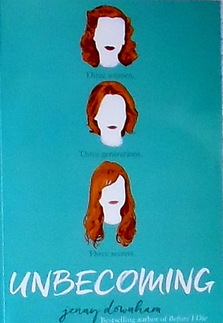 I've loved books and stories since before I could read. The school library was a magical place packed with shelves of wonder. I carried away stacks of books, my insides tingling, my mind racing ahead to a cozy, quiet spot where I would carefully choose the first book and open the cover. While the books I read have grown thicker and the selection broader, my love for good stories remains. But lately, I've been reading without enjoyment. Even worse, I was quitting on books. I never quit on books. If I read the first chapter, I stick it out to the end, even if I don't relate to the main character or totally believe the plot. I have too much respect for stories to not follow them to the last page. So what happened to my story-loving heart? I became a writer. Writers read books differently. We study them. We analyze and criticize, mentally edit, note the clever plot twists and lovely passages. If it's a masterpiece, we mourn our lack of ability to ever write such a thing. Maybe it's possible to shut off the writer's brain while you read, but I haven't learned it. Still, I was determined to rediscover the joy of reading. I scoured lists, tried book after book, read outside my favorites genres. Nothing worked, and it was starting to depress me. Then two weeks ago my esteemed writing peer Augusta Scattergood passed me a YA book to read. I took it with no enthusiasm. It was contemporary, not my favorite genre. I had two other books on my bedside table, one fiction, one nonfiction. But I opened the new book. Here's the beginning of Jenny Downham's Unbecoming: "It was like an alien had landed. Really, it was that weird. Like an ancient creature from another planet had crashed into Katie's day." That's seventeen-year-old Katie, who until this moment has been trying to live up to her mother's ideal: good student, good daughter, good sister to her emotionally challenged brother. Now, she's sitting next to a grandmother she's never met, listening to her mother desperately try to convince a hospital social worker the old woman can't come home with them. Katie observes: "The old woman just sat there, eyes shut now. She wasn't asleep though--you could tell by the tip of her chin. Maybe it was a trick? Maybe she wanted them to think she was napping, so she could scarper when no one was looking? Her boyfriend was dead, the doctors thought she was too vulnerable to go home, and her daughter didn't want her. Why not escape and start a new life somewhere else?" And just like that, I was there, sitting with that demented old woman, feeling Katie's confusion, curiosity and compassion. In the space of a page, I cared about them. I read the next page and the next several chapters, without thinking about who was writing or how they accomplished this incredible story. I didn't stop to study sentence structure or plot or character. For the first time in a year, I was enjoying a book. Thank you, Jenny Downham. Your beautiful book renewed my faith in stories and reminded me why I write. But best of all, you restored my joy in reading. * Note to readers: If you'd like to know more about Unbecoming, here's my review on Amazon. Which reminds me, authors appreciate reviews, even the critical parts, as long as the criticism is presented with respect. Your reviews have an impact. They can bolster writers' belief in their ability and help them tell better stories. But mean-spirited reviews are toxic. They poison the venues they appear on and bruise writers' hearts. So before you post negativity, think how you'd feel if someone wrote the same about your work. 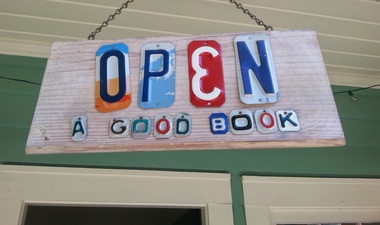 I devote a lot of blog space to artists and writers. But what this blog is really about is creating stories. And where would a story be without a reader? Every writer and illustrator I know cites a love of childhood books as the inspiration for their career path. So today's post features two opportunities for readers. Both have been mentioned in LikeWise before, but I felt they were worth a second look. Are you the type who can't be without a good read? Do you stack books on your bedside table or in your Kindle? Would you like to be the first to read the latest books and best of all, get them for free? Then check out Teenreads Teen Board. Teenreads.com provides books reviews, author interviews, previews of upcoming books, polls, a blog and newsletter. Their Teen Board consists of thirty volunteer teens who review books, write blog posts, provide feedback and answer a monthly "Teen Board Question." Volunteer hopefuls can apply this summer for the next session. Before you do, be sure you're willing to commit to a year of service, running from September 2016 through August 2017. Potential candidates should be avid readers and good writers. You have to live in the U.S to be eligible, but those outside the country are invited to apply as blog writers. It sounds like a great place to showcase your talents and meet other book lovers. The second opportunity empowers readers. The Harry Potter Alliance connects readers and encourages them to make a positive difference in the world. They donate books to needy children, advocate for issues important to book fans and gather to share stories, motivate and inspire. There are chapters across the globe. If you can't find one near you, HPA gives you the tools to start one. And they do have a contest. Members are encouraged to join one of the Houses from the HP story: Gryffindor, Ravenclaw, Slytherin or Hufflepuff. The Houses accumulate points by completing tasks, like donating books. The current champion is Ravenclaw, whose members accumulated over 200,000 points in the 2015 Accio Books campaign. So what are you doing this summer? Got room in your schedule for a HP chapter? NaNoWriMo starts Sunday, so this is prep time for all you people itching to start a novel. The Young Writer's Program offers a novel workbook, author pep talks and venues to connect to other teen writers.
NaNo launched in 1999 and last year 325,142 participated. Since it's beginning over 250 NaNo novels have been published, including Rainbow Rowell's Fangirl and Marissa Meyer's Cinder. Here's how it works. You go to their website, fill out a profile, hang out with other writers and commit to trying to write 50,000 words in a month. At the end of November, you stop. Not everybody makes the goal, so don't feel bad if you don't. There are badges that reward your best efforts. Display them with pride! Fifty thousand words is a lot to write in a month. The great thing is, no one expects them to be brilliant. You just write the story straight from your head. It will probably be a mess. Like most first drafts, it might make you wince when you read it. But it might also be the beginning of a good book. NaNoWriMo is a fast, fun way to prove you have a novel in you. It doesn't guarantee it will be a novel worth publishing. The value of the words you write depend on you learning to write them well. So if you start NaNo as a beginning writer, don't expect to create a blockbuster novel. Use it as a learning experience. Most authors start by writing books no one will ever read. Why not do that with a legion of new writer friends? And for experienced writers who are using NaNo to bring a third or fourth book into the world, who knows? It could be the next Eleanor and Park. 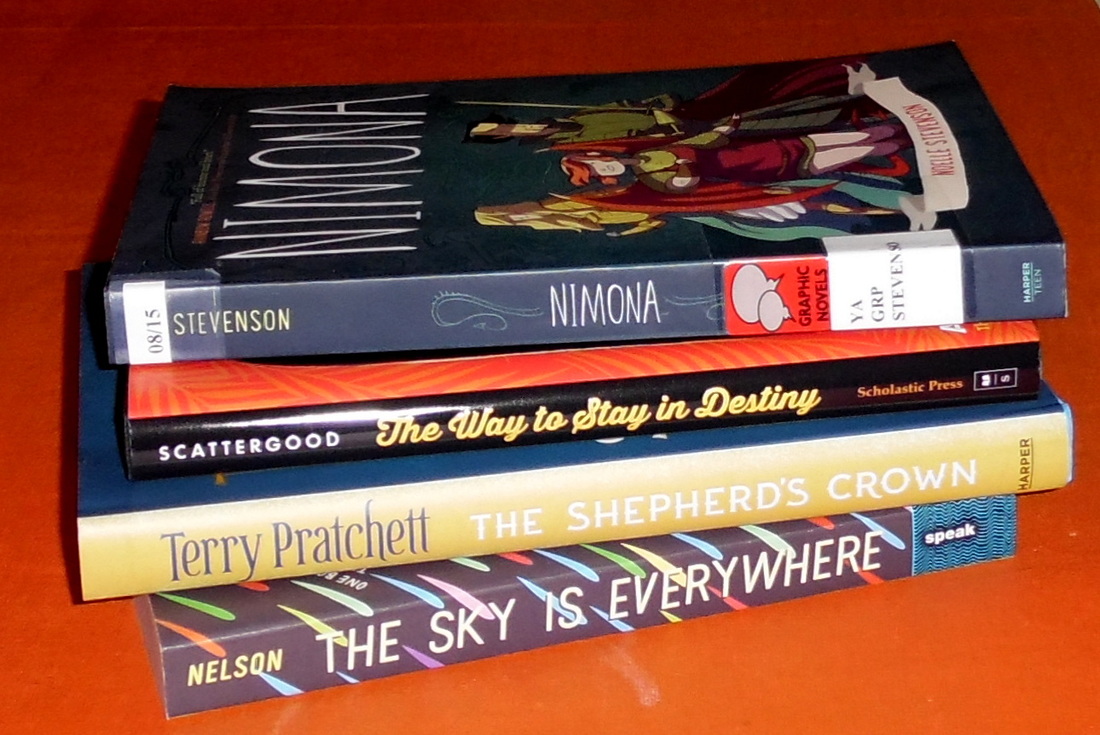 October 18-24 is Teen Read Week. Sponsored by YALSA, the Young Adult Library Services Association, the theme for this year's event is Get Away, and it encourages teens to take a break from their busy lives by escaping in a book. Before I grew serious about writing books, I read fiction to escape. I loved finding new favorite authors, waiting for their latest titles to emerge and savoring every word. But for the last seven years, I've read with a focus on learning to write better. When you're dissecting sentences and analyzing plot, it sort of steals the pleasure from the story. I miss the old me that approached each book like a house full of hidden treasure, anticipation tingling up and down my spine as I opened the cover. And it still happens. Even with my brain set on Study Mode, I find books that draw me into a story so completely, I abandon the analyzing and dissecting, latch onto the protagonist and follow them like an adoring puppy. Because I love books. I love picture books that tickle and dazzle with carefully chosen words and brilliant art. I love middle grade stories, especially the ones that touch my heart. And of course, I love YA books, and not just because I write stories for that age. My favorite books are the ones that make me see the world in a new way. Sometimes that's fantasy, sci-fi or magical realism. But just as often, it's a contemporary or historical tale. Good books take us to another place and when we leave, we're changed. Our minds have stretched to allow room for new thoughts and perspectives. I just finished reading the graphic novel Nimona, by Noelle Stevenson. I'm not into comic books or super heroes, but somehow this book landed on my reading pile. And I loved it. It's a book after all, with a story to tell, so I shouldn't be surprised. Do you have your literary vacation picked out for Teen Read Week? Is it one book or a stack? Will you cozy up with familiar authors or try something new? There's still time to search. Go on now, what are you waiting for? Oh, you're in the middle of Algebra II, squinting at the impossibly twisted formula the teacher just scribbled? That's okay then. But the very next time your fingers hop online, head thee to the library and reserve a book. You deserve a vacation from mind-tangling math formulas! So Nerdcon: Stories, October 9 and 10 at the Minneapolis Convention Center. Will you be there? Because wow, oh, wow. First it's hosted by Hank Green of Vlog Brothers and Nerdfighters fame. Second, it includes authors like Rainbow Rowell, Jacqueline Woodson, Maggie Stiefvater, Lev Grossman, M.T. Anderson, Holly Black and John Green. Whew. I need to sit down after that. Then there are performers, Harry and the Potters, for example, and storytellers who are also actors, rappers and comedians, plus lots more authors you don't want to miss. Nerdcon Stories was created to bring book lovers and authors together to celebrate storytelling. It's another brilliant idea sprung from the Green brothers. John and Hank also started Vidcon in 2010, the first ever conference focused on internet video. It's now the largest event of its kind in the world. This is the first year for Nerdcon Stories and according to the website, they're expecting around 3000 participants. Will you be one of them? Imagine twenty years from now, telling your children you were there. Of course, they'll be dedicated readers just like their parents, and they'll sit at your feet and ask, "What was it like?" If you go, please, please come back and share your experience with the rest of us who are stuck at home with OCD dogs. NOTE: Nerdcon Stories is not to be confused with Nerd Con in California. That one involves Cosplay, comics and video games. Nothing wrong with that, just a different crowd. 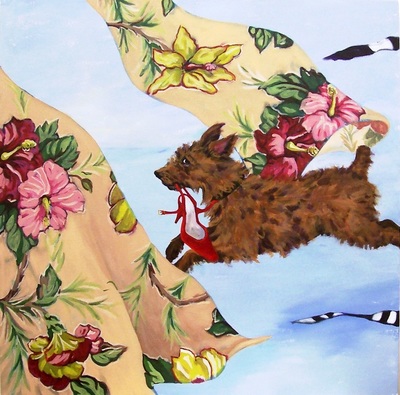 Run Toto Run by Susan Banghart Run Toto Run by Susan Banghart I've been thinking a lot lately about art. Not any one art, all art, and how one creative process inspires another. When I studied painting in college, students were urged to explore mediums and other arts: dance, music, theater. Artists collaborate all the time. Theater and dance productions call for artists to do make-up, costume and set design, as well as actors and dancers. Musicians make choreographed videos and help create album covers. Visual artists stage events, using music, performance and video to express their concepts. But writing is different. Unless, you're writing a picture book or graphic novel, your writing will most likely be represented by words on a page. Yes, an artist will create a cover, but authors aren't majorly involved in that process. I've been a visual artist all my life. Does that sound weird? It's true. I believe I was born with the urge to make marks on paper that expressed what I couldn't say in words. My writing grew from that art. My paintings were always telling stories. Just look at Toto. He's sick of following Dorothy through OZ. He's grabbed the ruby slipper and he's headed toward a tropical paradise with the wicked witch in pursuit. For me, I think every work of art begins with a story. Seven years ago, a series of drawings begged to be a book and I've been writing ever since. Even though I don't illustrate my stories (mostly because young adult novels aren't usually illustrated), I visualize them. And I wonder, besides standard illustrations and creating imagery with words, how can I use my visual art skills in my books? Other artists have asked that question too. I'm in awe of author/illustrator Brian Selznick who produces cinematic experiences with image and text in books like The Invention of Hugo Cabret and Wonderstruck. And David Weisner, whose images are so powerful, he needs no words to tell picture book stories like Flotsam. At this stage in my life, I'm most interested in creating pictures with words. But I'm glad the artist in me asks questions that prompt my brain to think outside the box of traditional storytelling. I hope the questions inspire you to unlock the gates in your brain. Pollinate your chosen passion with other art.
School's out. Two months of freedom from school work. What will you do with all that freed up brain space? Read, of course! You'll want books at the beach, books for lazy afternoons on the porch or under a tree, books on long car rides and late nights in bed. So this month, LikeWise features sites dedicated to readers.
First up is teenreads.com. Teenreads offers the Ultimate Reading List of 400 books, interviews with authors and publishing professionals, polls, contests, a blog and monthly book and screen reviews. What I liked most about this venue was the Teen Board. Thirty teens from around the country are chosen by staff for a year long commitment to provide reviews and blog posts, as well as answer reader questions. The site's recommendations include non fiction and adult books. Next up is Readingteen.net. It features similar content: book reviews, giveaways and blog. But it's run by two mothers and their young adult children with part time reviews by a handful of teens. While there are adult, motherly opinions being offered on their blog, I thought the content was thoughtful and invited discussion. I especially liked this post urging book banners and the banned books' supporters to stop fighting and start listening: Child Corruptors vs. Nazi Book Burners At The Library of Congress, you'll find booklists, poetry and free resources. They feature fantastic author webcasts and a gazillion links that probably lead to a gazillion more links so there's no telling what sort of treasure you'll dig up. Finally, there's Reading Rants, a blog hosted by Middle school librarian Jennifer Hubert. She reviews books for teens but doesn't stick to the YA section and she accepts book suggestions from readers. I love her listed links, which include book reviews by topic, blogs for teens and out-of-the-ordinary authors. These are just a sampling of the sites I found. Try them out, start a reading list. If you're the type who likes to share books with friends and those friends are away for the summer, join a book club. You can find them at libraries, Nerdfighters, Goodreads or The Guardian. And if you love a book so much you're eager to share it with the world, create a YouTube review. Who knows, you might gather a following, like Jesse the Reader who offers brief book reviews for summer reading below.  A blank page, a white canvas, a lump of clay. Artists experience a unique thrill when faced with a new project. I've never tried to analyze it, but for me I think it's a mix of exploring the unknown and anticipation of what may grow from words, paint and clay. And hope. I want it to be successful. I hope it will come closer to being the type of work I admire. I just finished a book I've been working on for over a year. I'm a little low on creative energy and still sweeping the last story from my brain. You develop a relationship with each project. Bond with it, commit to working through good times and bad. It can be hard to let go. But I had an idea for a new story so I scratched out a beginning. Then my brain kicked in and started asking the main characters questions. Who are you? What do you want? What's standing in your way and what will you do about it? The answers will fill blank pages and hopefully, another book will be born. As a visual artist, I face a blank canvas with photographs, sketches or props as guide. I have a vision of what I hope to create and I can't wait to translate it on canvas. I've done very little sculpting and crude ceramic work but I love a lump of clay. What will it be? A pot, a figure, or an abstracted thought? From our minds to our fingers to the medium, we express. What do you want to say to the world? Stretch a new canvas, create a new document, buy a new batch of clay. Start a fresh project today. If you're wondering why there's a photo of my dog Teddy illustrating this post, it's simple. When we adopted him two months ago, he was a blank slate. He's getting to know us. We're getting to know him, asking questions as we go and eager to grow this relationship. Sort of like his hair. He had next to none when we met him. Now he has chocolate brown spots that shine in the sun like fudge. He's a work of art, for sure Just so you know, I'm not ashamed of using Teddy as a metaphor and since it's pretty much The Year of Teddy at our house and he doesn't mind being photographed, you'll probably see a lot of his mug. 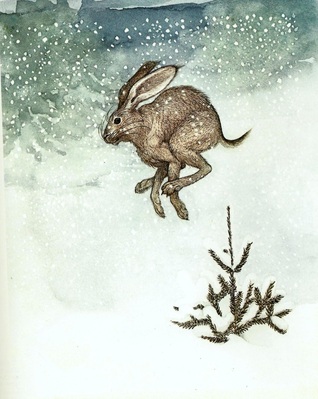 I said a sad goodbye to the Christmas tree, lights and decorations last weekend. The world always seems a little bleak after the holidays. It isn't just the loss of tinsel and cheerful displays. Spirits also take a dive. Is it because we've lost that sense of anticipation? I don't know about you, but I need something to look forward to, something that makes my insides tingle every time I think of it. Valentine's Day doesn't do it for me. I have nothing on my writing agenda this year. No exciting conferences, no contests, not even any goals. I'm thinking I better change that. Setting one goal with one date attached can make a difference. If I commit to a children's writer's conference in June, then I'll want to present the best version of my current novel there. That's motivation to polish my messy story. So revision happens. And that little tingle in my belly keeps me typing. The conference isn't on my calender yet, but I do have a new goal for this blog. While writing November's post, Finding Your Creative Path, I recognized how important it is to find like-minded souls and mentors who support and encourage your passion. The sooner, the better. So I'm adding a second monthly post called LikeWise, featuring venues that connect teen artists, writers and readers. Last year, I challenged myself to create a sketch for each post. But it held up publication. So this year, I only promise to share sketches IF they happen before I'm done with my post. Don't hold your breath. However, I will be sharing gorgeous art from my set of illustrator biographies published by Peacock Press/Bantam Books in the 1970s. The one above is by Nancy Ekholm Burkert from Hans Christian Andersen's book, The Fir Tree. The text for the illustration was: " . . . a hare would often come . . ." I hope your 2015 calender is filling up with dates and goals that make your insides tingle. If not, this is a good day to find some. |
AuthorI write middle grade and young adult books with a magical twist, and I'm represented by the fabulous Leslie Zampetti at Open Book Literary. Writer Websites
Augusta Scattergood Maggie Stiefvater Rob Sanders Fred Koehler JC Kato Sarah Aronson Kelly Barnhill Linda Urban Kate DiCamillo Jacqueline Woodson Helpful Links SCBWI Agent Query Lorin Oberweger - Freelance Editor Search BlogArchives
May 2020
Categories
All
|
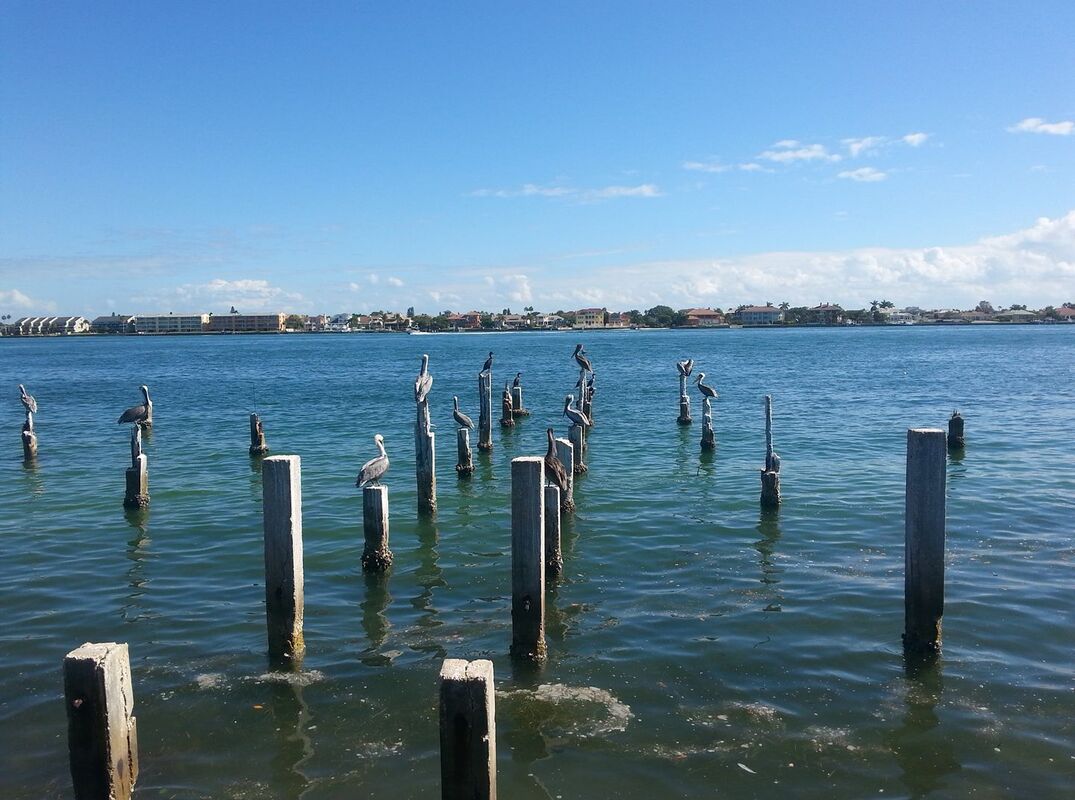

 RSS Feed
RSS Feed
